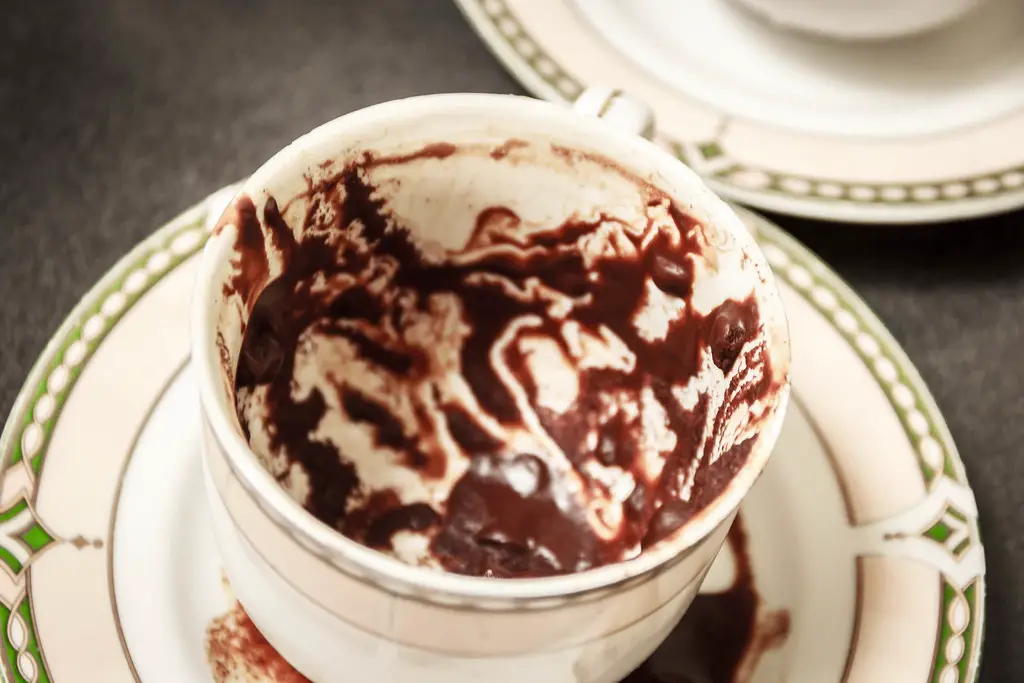If you’re a coffee lover, you know the struggle of finding a proper way to dispose of those pesky coffee grounds. It’s not just about keeping your kitchen clean, but it’s also an important environmental consideration. After all, tossing coffee grounds in the trash means they’ll end up in landfills where they won’t break down properly.
But fear not, because there are many ways to get rid of coffee grounds in an eco-friendly way. In fact, coffee grounds can actually be a great fertilizer and composting material if used correctly.
Of course, figuring out what to do with your used coffee grounds can be a bit of a hassle. That’s why we’ve put together this helpful guide to walk you through the different ways to dispose of them.
Whether you’re a seasoned composter or just looking for some creative ways to repurpose your grounds, we’ve got you covered. In this article, we’ll cover the basics of composting and recycling, as well as some unique ways to put your used coffee grounds to good use. So, let’s get started!
Can You Put Coffee Grounds Down On The Sink
Coffee grounds can be put down the sink if they are drained properly, but it is not recommended. It can cause clogs in your plumbing system if they are not properly drained.
This is because coffee grounds are gritty and can collect other debris such as food particles, grease, and soap scum.
When these items combine with coffee grounds, they can create a thick paste that can clog your pipes.
How To Dispose Of Coffee Grounds

In the event that you are curious about the eco-friendly disposal of your coffee grounds, a plethora of choices await you. Here are six ways to repurpose your used coffee grounds:
Composting – Among the most straightforward methods to dispose of coffee grounds is to add them to your compost heap. Given their high nitrogen content, they can augment soil aeration and moisture retention. You can utilize them singly or blend them with other organic materials such as food scraps.
Coffee Fertilizer Production – The byproduct of coffee brewing can be transformed into a nutrient-dense fertilizer for your garden. This natural fertilizer can be concocted by equally mixing coffee grounds, Epsom salts, and banana peels. This will heighten the growth of your plants and thwart pests from damaging them.
Luring Worms – Coffee grounds are a worm magnet, hence incorporating them into your garden or compost pile can attract these beneficial organisms. Worms can boost soil aeration and provide vital nutrients for your plants.
Creation of a Natural Exfoliator – Coffee grounds can serve as a natural skin exfoliator. To create a paste, mix the grounds with a small amount of coconut oil and delicately slough off dead skin cells. This can leave your skin feeling velvety and rejuvenated.
Repelling Pests – The smell of coffee can repel a variety of pests, such as ants, cockroaches, and rodents. All you need to do is sprinkle coffee grounds around the periphery of your home or in areas where pests are known to congregate.
Dish Cleaning – Last but not least, coffee grounds can be employed as an abrasive to remove stubborn stains from dishes, pots, and pans. Combine them with a smidgen of dish soap and warm water to produce a paste, and use it to scrub away obstinate stains.
Coffee Grounds for Gardening
Coffee grounds for gardening are a popular and cost-effective way to provide nutrients to soil and plants. They are a by-product of coffee production and are high in nitrogen, potassium, and other minerals beneficial for plant growth.
Additionally, coffee grounds can help aerate the soil, reduce soil acidity, and attract beneficial insects like earthworms and spiders.
They can be mixed directly into soil, compost, or mulch to provide essential nutrients, as well as create a more nutrient-rich soil environment to promote growth. For example, adding coffee grounds to compost can help increase nitrogen levels, which is an essential nutrient for plant growth. Coffee grounds can also be used as a mulch to help retain moisture and keep weeds out. Additionally, coffee grounds can be used to attract beneficial insects, such as earthworms and spiders.
Moreover, these beans can be applied as a mulch around plants, as a soil amendment, or as a compost activator. They are also great for improving soil structure and aeration, which helps plants to grow better. Coffee grounds can also be used to deter pests.
Some gardeners report that ants and slugs are less likely to enter the garden if coffee grounds are scattered around the perimeter.
When using coffee grounds in the garden, it is important to remember that they are acidic. This means that they should not be used on plants that prefer neutral or alkaline soils.
When incorporating coffee grounds into the garden, mix them into the soil or spread them around the top of the soil. Coffee grounds can also be added to the compost pile. As with any compost material, it is best to mix coffee grounds with other materials to create a balanced and nutrient-rich compost.
Using coffee grounds in your garden can also help to repel certain pests, such as slugs, snails, and ants. The grounds have a strong odor that can be off-putting to these pests, making them less likely to get close to your plants.
Can You Recycle Coffee Grounds?

These beans are organic material, which means they can break down through composting. Composting is the process of breaking down organic material into soil, which can be used to fertilize plants. However, while composting is a great way to recycle coffee grounds, there are also ways to recycle them without composting.
Coffee grounds can be used to make biodegradable plastic. This plastic can be used to make everyday items, such as packaging and containers. Coffee grounds can also be used to create biodegradable paper, which can be used to make sustainable products, such as books and flyers.
One of the most popular ways to recycle coffee grounds is to use them as a soil amendment. It can be mixed into the soil to add nutrients, improve drainage, and increase water retention. This helps plants grow better and makes them more drought resistant.
As mentioned earlier, another way to recycle coffee grounds is to use them as an exfoliant. Coffee grounds can be mixed with oil and used as a scrub to cleanse and exfoliate the skin. Coffee grounds can also be used as a natural odor absorber. By spreading coffee grounds around the house, you can reduce unpleasant odors and increase the smell of coffee.
In addition to using coffee grounds in the garden and for DIY projects, they can also be recycled for energy production. Coffee grounds can be used to make biodiesel fuel, which is an alternative fuel made from vegetable oil. Biodiesel is a clean-burning fuel that is less toxic than traditional fossil fuels and helps reduce emissions from vehicles.
Finally, they can also assist to make coffee candles. Coffee grounds are mixed with wax to create candles that have a strong coffee scent and can be used to freshen up any room.
Recycling facts related to coffee grounds;
- Coffee grounds are 100% recyclable.
- The average person throws away about 2.7 kg of coffee grounds each year.
- Coffee grounds can be composted or turned into biodiesel.
- In 2018, approximately 1.44 million tons of coffee grounds were recycled in the United Stats.
How To Reuse Or Repurpose Coffee Grounds?
1. Make a coffee-scented air freshener. Mix coffee grounds with a few drops of essential oils and put the mixture in a sachet or small container. Hang it near a window or other areas of your house to enjoy the fresh aroma.
2. Use coffee grounds to clean silverware. Soak silverware in a mixture of water and coffee grounds to help remove tarnish.
3. Use coffee grounds as a pest repellent. Sprinkle coffee grounds around plants to ward off slugs and snails. The grounds have a strong aroma that can repel insect.
4. Create a coffee-scented candle. Place coffee grounds in the bottom of a glass container and pour melted wax on top. Once the wax cools, light the candle and enjoy the pleasant aroma.
5. Use coffee grounds to create a natural dye for fabrics. Soak the fabrics in a mixture of water and grounds overnight, then rinse and dry.
6. Use coffee grounds to make herbal tea by combining them with dried herbs, such as chamomile, peppermint, or lemon balm.
FAQs
Can you pour coffee grounds down the toilet?
No, coffee grounds should not be poured down the toilet. Coffee grounds can clog the plumbing in your home, leading to expensive repair bills. Instead, coffee grounds can be disposed of in the trash or composted.
How do you dissolve ground coffee?
Ground coffee can be dissolved by first bringing a pot of water to a boil and then stirring a tablespoon of coffee grounds into the boiling water.
The coffee grounds will dissolve in the hot water, creating a flavorful and aromatic cup of coffee. The number of coffee grounds used can be adjusted to create a stronger or weaker cup, depending on the desired strength.
Can I throw coffee grounds on my lawn?
Coffee grounds are acidic and can cause the soil pH to drop, which would be harmful to the plants growing on your lawn. Additionally, coffee grounds can attract pests like slugs, snails, and rodents, which can damage your lawn. So, you should avoid throwing coffee grounds on the lawn.
Verdict
The disposal of coffee grounds is an important environmental concern, as coffee grounds are not biodegradable and can have a negative impact on nearby ecosystems. While some may be tempted to simply throw away the grounds, this is not recommended, as the grounds can contaminate the water supply and attract unwanted pests.
The best way to dispose of coffee grounds is to compost them or use them as mulch around plants or in the garden. Coffee grounds can also be used to make homemade cleaning products, as well as a natural fertilizer. In short, there are many ways to dispose of coffee grounds that are both environmentally friendly and beneficial to one’s garden.

Gemma Alexander has an M.S. in urban horticulture and a backyard filled with native plants. After working in a genetics laboratory and at a landfill, she now writes about the environment and recycling topics.

